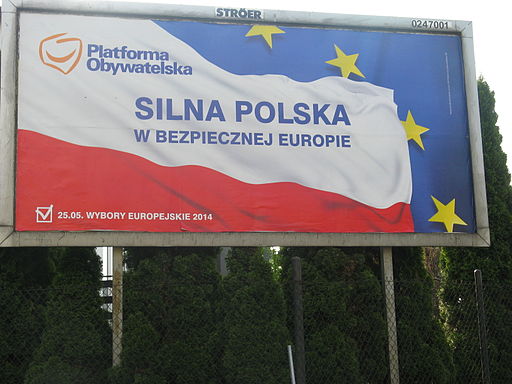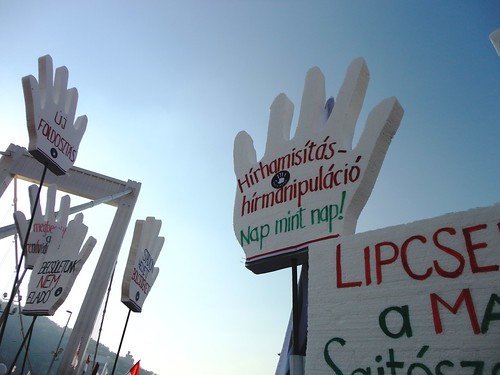Allan Sikk and Sean Hanley detect a new breed of anti-establishment party emerging centre-stage in Eastern Europe.

Photo: Beroesz via Wikicommons
In both Western and Eastern Europe extremist populism and illiberal movements, we are told, are strong, politically influential and relentlessly on the rise. In countries such Austria, Slovakia and Poland radical right parties have already held government office. Elsewhere they have sufficient parliamentary representation to influence government formation and help make the political weather. Recent electoral breakthroughs in countries without strong illiberal populist traditions by parties such the True Finns (2011), the Sweden Democrats (2010) or Hungary’s Jobbik (2010) seem to highlight the accelerated growth of such parties.
Given the greater impact of recession and reduced EU leverage in the region, the new democracies in Central and Eastern Europe (CEE) would seem to be especially vulnerable to such tendencies. However, notwithstanding the spectacular rise of far-right in Hungary, recent elections in key CEE states suggest that voters in the region are turning to new parties, which combine familiar anti-elite, anti-establishment populist rhetoric with mainstream pro-market policies, a liberal stance on social issues and calls for political reform.
Poland’s October 2011 elections, for example, saw the wholly unexpected emergence as the country’s third force of a grouping led by maverick and political showman, Janusz Palikot, on a platform combining anti-clericalism and social liberalism with flat taxation and a slimmed down, citizen-friendly state. In May 2010 a new pro-market anti-corruption party, Public Affairs (VV), campaigning to kill off the ‘dinosaurs’ of the political establishment enjoyed a similarly meteoric rise in the Czech Republic, winning 10% of the vote. In Slovakia in elections a few weeks later the Freedom and Solidarity (SaS) party formed in 2009 by the economist and businessman Richard Sulík entered parliament with a similar vote share on a programme of fiscal conservatism and socially liberal reforms such as the introduction of gay marriage and decriminalisation of soft drugs. Hungary’s Green-ish Politics Can Be Different Party (LMP) can, with some qualifications, be regarded in a similar light.
Such centrist or (neo-) liberal populists, or as we prefer to call them anti-establishment reform parties (AERPs), are we believe, a growing and important phenomenon in Central and Eastern Europe and, perhaps Europe more generally. A more careful and wider look at the CEE region over the last 10-15 years suggests that such AERPs are a widespread and common phenomenon which can, in some contexts, enjoy landslide electoral success: the Simeon II National Movement in Bulgaria (2001), New Era in Latvia (2002) and Res Publica in Estonia (2003) were all new, anti-establishment reformers, which topped – or came close to topping – the poll at their first attempt and headed new coalition governments. (more…)
Filed under Uncategorized
Tags: Austria, Central and Eastern Europe, corruption, Czech Republic, Eastern Europe, elections, EU, Finland, Freedom and Solidarity, fsQCA, Hungary, Janusz Palikot, Jobbik, Latvia, liberalism, Lithuania, LMP, New Era, Palikot Movement, Poland, political parties, populism, populists, Public Affairs, QCA, Richard Sulík, Slovakia, Sweden, Sweden Democrats, True Finns, Western Europe
3 Comments »
 Close
Close







